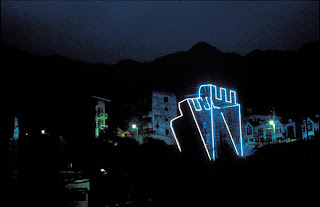
The Lisbon Earthquake both destroyed countless cultural artefacts and became a major reference point for eighteenth century art. Kant’s notion of the Sublime was much indebted to it, as was Voltaire’s attack on Leibniz in Candide. This class examines the generative power of natural catastrophes from the explosion of Mount Vesuvius in the year 79 to the Asian Tsunami of 2004.
I referred to the following texts this morning:
- Umberto Eco, A Portrait of the Elder as a Young Pliny: How to Build Fame', in On Signs, edited by Marshall Blonsky (Oxford, Blackwell, 1985), pp 289-302.
- Simon Winchester, Krakatoa: The Day the World Exploded (London, Penguin, 2003)
- David Keys, Catastrophe: An Investigation into the Origins of the Modern World (London, Century, 1999)
No comments:
Post a Comment